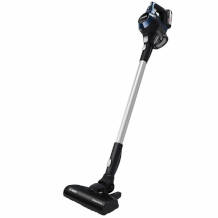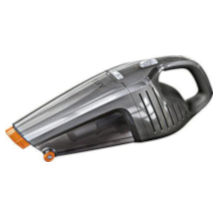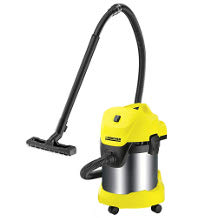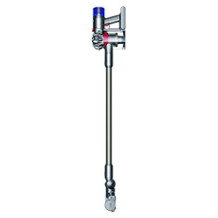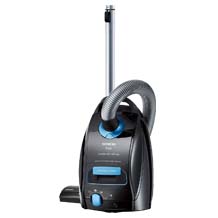Vacuum mop combo purchasing advice: how to choose the right product
- The most important facts in a nutshell
- Using a squeegee on hard floors is very uncomplicated. Thanks to the combination of two devices, you also save time.
- Duo mops are good for cleaning small and large surfaces.
- There are combi machines that can clean carpets in addition to hard floors.
- Pay attention to the capacity and weight to clean floors as easily and efficiently as possible.
- A self-cleaning function as well as an indicator to check the dirty water tank are particularly practical to get the most out of the appliance.
What is a suction mop?
Suction wipers or mop vacuums are also called hard floor cleaners. As the name suggests, they can be used to clean hard floors. They are particularly easy to use and make everyday floor cleaning easier. Visually, they resemble classic stick hoovers. In terms of function, however, the two types of appliance differ significantly, as a hard floor cleaner, unlike a normal hoover, which has a dust container, has a fresh water tank and a dirt tank. Suction wipers therefore not only remove dirt particles, but also mop the surface at the same time. This wet wiping function is particularly practical, but is usually not suitable for soft surfaces such as carpets.
Duo mops are true all-rounders
Duo mops specialise in the thorough cleaning of hard surfaces: Tiles, laminate, stone, marble or even parquet. Including a wet-wipe function, the devices promise maximum flexibility compared to normal hoovers. Some products, the so-called 3-in-1 vacuum cleaners, also have a dry function. This gives you the option of switching between normal vacuuming on carpets and wet vacuuming on hard floors at the touch of a button. If you want to combine two work steps – vacuuming and mopping – in one, a hard floor cleaner is the best choice.
An example with milk and muesli
A tipped-over cereal bowl with milk usually poses a double problem: The milk has to be mopped up and the muesli has to be soaked up. But since it is on the floor together with the milk, you just push it in front of the cloth or mop. With a suction mop, you conveniently pass over the cereal-milk mess: the device sucks up both and then damp-mops the floor.
The advantages of hard floor cleaners
Goodbye hand brush, bucket and mop: if you choose a floor cleaner, you no longer have to fuss with these utensils when cleaning hard surfaces. There is also no need to vacuum beforehand with a conventional hoover, because squeegees do the vacuuming and mopping in one step. This not only saves time, but also ensures very thorough cleaning.
As it is possible with hard floor cleaners to dampen the floor only slightly, users save water and can also clean sensitive surfaces such as wooden floors. By moistening the dirt, it can be removed much more easily than with conventional cleaning tools. Tedious scrubbing is now a thing of the past.
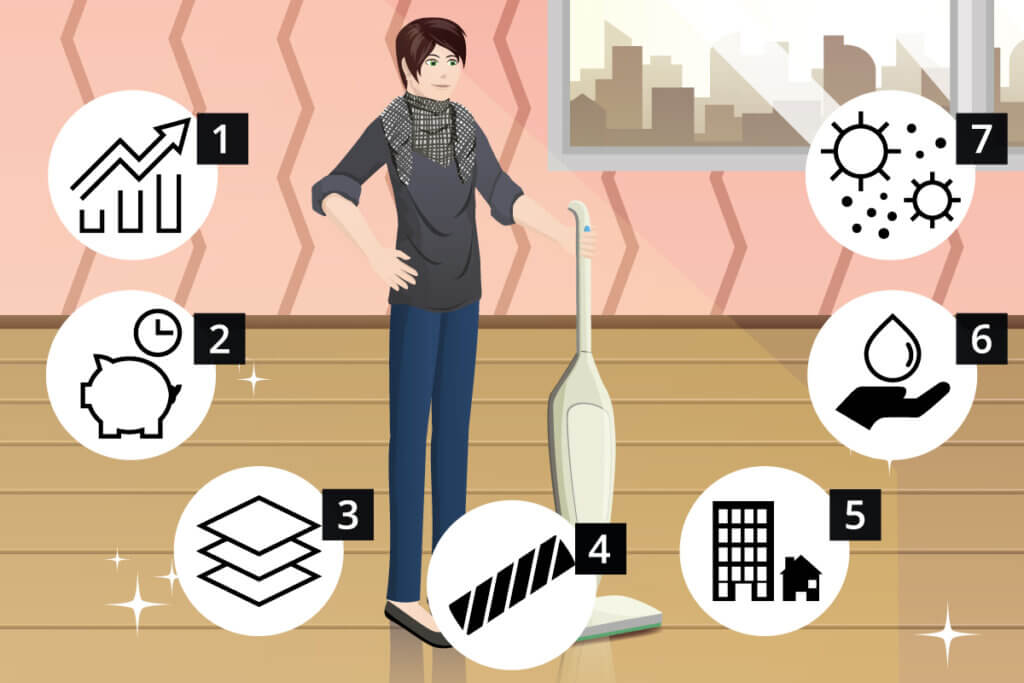
These are the advantages of suction wipers at a glance:
Very good cleaning performance
Since suction mops work with water, they score over conventional stick vacuums with a very good cleaning performance. While you use a lot of water when dipping a mop into a bucket of diluted cleaning agent, you can dose the amount much better when cleaning with a suction mop.
Time saving
By vacuuming up loose dirt particles and wet-mopping the floor at the same time, you save time when using a suction mop. Both steps are done in one cleaning cycle.
Suitable for all hard floors
Squeegees can be used on all hard floors – whether parquet, laminate, stone, marble, tiles, vinyl or linoleum. Ideally, the floors should be sealed to prevent water penetration. Only for soft floors, such as carpets, are conventional squeegees not suitable without the corresponding additional function. If you also want to vacuum carpets with the same device, it is best to opt for a 3-in-1 combination device.
Brush rollers available on some machines
Some squeegees have a brush roller in the head instead of a wiper. This allows you to easily switch between hard floor and carpet cleaning. Thanks to this extra function, the device can also work without water while you move it over textile surfaces. The brush roll picks up any dirt in the carpet hairs. On units with self-cleaning, the dirt from the brush goes into the dirty water tank, so you don’t have to clean it by hand.
For private and business areas
Hard floor cleaners can be used to clean clear areas in your private household as well as large commercial areas. For very small areas, however, squeegees are only suitable to a limited extent because, like conventional stick hoovers, they reach their performance limits in corners and under furniture.
Low water consumption and clean water
The water consumption of suction mops is relatively low. Users can clean large areas with just a small amount of fresh water. Many models offer the option of metering the water supply while cleaning. In addition, you always clean with clean water: In the course of suction mopping, the device draws clean water from one tank and transfers the dirty water to the other tank.
Allergy and pet friendly
Hard floor cleaners are particularly suitable for allergy sufferers because all the dirt is bound with the water. No annoying dust particles are whirled into the air, which can enter the respiratory tract. Squeegees also score points when it comes to removing pet hair; some manufacturers have even specialised in pet hair removal. The Bissell brand, for example, advertises a model that not only picks up hair with the help of a specific cleaning agent, but also removes odours. Special filters ensure that hair is removed from hard floors and carpets.
What should be considered when buying a suction mop?
Depending on how often you want to clean an area and how large it is, a different capacity is suitable for the squeegee’s tanks. Another consideration is how handy the device should be in terms of manoeuvrability. Here, the size and weight are of particular importance. The running time and the power of the battery are decisive for efficient cleaning without longer interruptions. Practical additional functions such as self-cleaning can also simplify the use of the squeegee.
What capacity is recommended?
The rule of thumb here is: the larger the area, the larger the capacity of the tanks should be. The capacity of hard floor cleaners refers firstly to the volume of the fresh water tank and secondly to the volume of the used water tank. If you frequently clean very large floor areas, it is inconvenient to have to refill the fresh water tank several times because the volume chosen is too small. For private use, a low or medium volume is usually sufficient. Squeegees used to clean commercial surfaces should have correspondingly large tanks. The market offers products with a capacity of 200 to 800 millilitres.
Little power is enough
As a rule, suction mops have a power of around 500 watts. In comparison, conventional hoovers have about 400 watts of power when they are very economical. 500 watts are therefore more than sufficient for efficient floor cleaning.
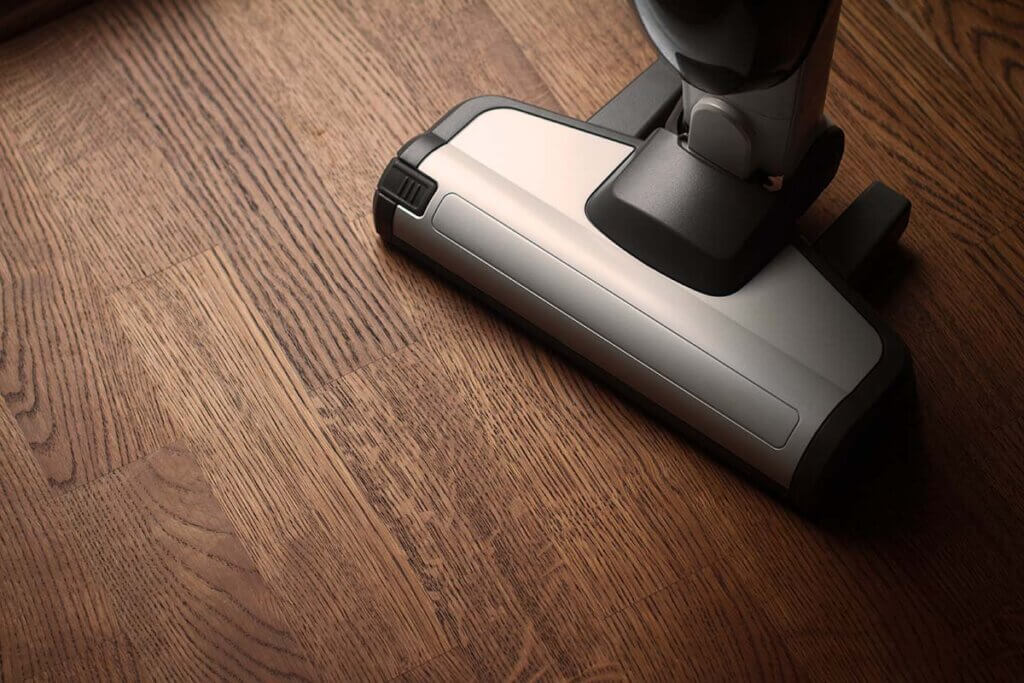
Handling with little effort
Among the hard floor cleaners are so-called rollers that are driven by a motor. These rollers do the actual work. They ensure that users usually only have to pass over the dirty surface once to remove the dirt. If it has already dried, a second pass is usually necessary. However, annoying bending and scrubbing are not necessary; squeegees are particularly handy and ergonomically shaped.
Height-adjustable handles for more comfort
Many appliances can be adjusted in height. This allows them to be positioned in a way that is as easy on the back as possible. This helps when cleaning and stowing away afterwards.
A must-have: the self-cleaning function
The maintenance of hard floor cleaners is usually uncomplicated. Many devices are equipped with a self-cleaning function: The cleaning roller is vacuumed during the process so that coarse dirt does not get caught in it and reduce the mopping performance. If products do not have this function, you may have to clean manually. This costs time and nerves; with the practical self-cleaning function, you save yourself that. However, if the vacuum cleaner does get stubbornly dirty, you will have to do it yourself.
Are squeegees also suitable for carpet cleaning?
It is important to know that not all hard floor cleaners are suitable for cleaning carpets. However, some manufacturers offer combi machines that allow users to switch between hard and soft floor cleaning at the touch of a button. These products score with their multifunctionality and flexibility. They are equipped with special brush rollers that are also designed for cleaning carpets. Conventional squeegees work with mop-like brushes that are not designed for textile fabrics.
Other buying criteria
While the above criteria are among the most important, the following points are not always central. However, they can make a difference, especially for those who place a lot of emphasis on the handling of the equipment. These buying criteria include, for example, weight, size, volume, battery life and price.
Weight and size
The larger and heavier the device, the greater the effort required during use. Particularly light devices have a weight of less than three kilograms. The heavier models usually weigh between four and ten kilograms. A weight of around five kilograms is therefore a good average: squeegees in this weight class are easy to handle and offer sufficient power at the same time. The size depends on the capacity and is usually comparable with the dimensions of a conventional floor hoover.
Battery life
Most squeegees are corded. If you find it too inconvenient to depend on a cable during use, it is best to choose a device with a rechargeable lithium-ion battery. Some manufacturers’ squeegees can be used with both a cord and a rechargeable battery. These models are usually more expensive because you have to pay extra for the rechargeable battery. The disadvantage of rechargeable batteries is that they have to be recharged regularly. Their advantage, however, is their flexible use. A good battery should have a running time of at least 45 minutes. Ideally, battery-powered devices also have a display that shows the capacity. Most battery-powered vacuum cleaners are recharged in a separate charging station connected to the mains.
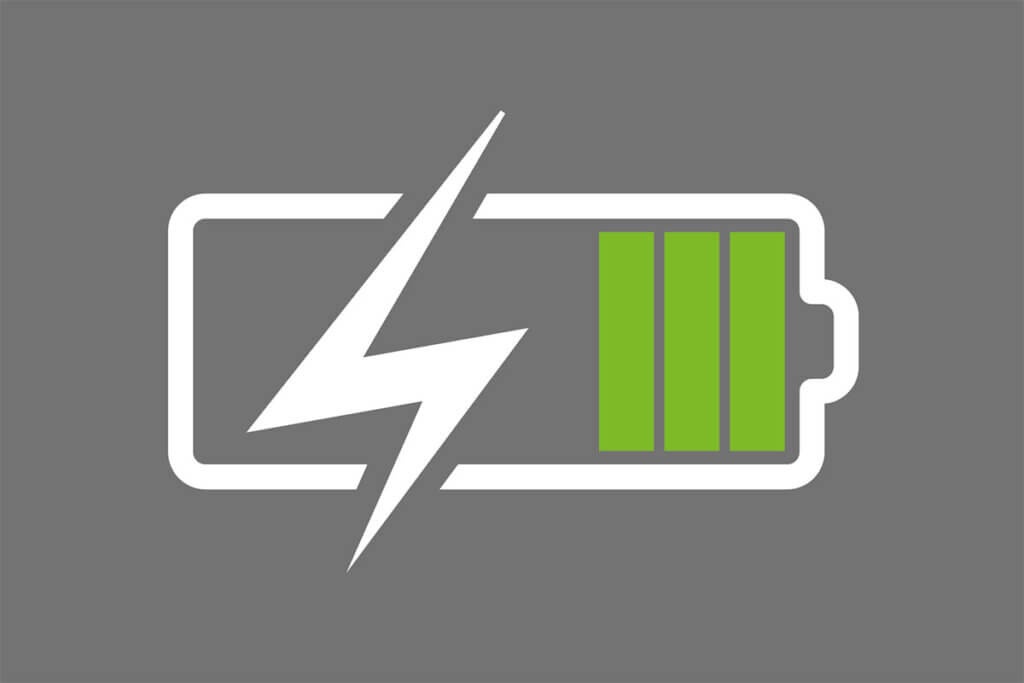
Material
The housing, handle and water tanks are usually made of plastic. Many squeegees have a handle with a silicone cover to provide a good grip during cleaning. The higher-priced models usually have a higher quality finish. High-quality workmanship is important to ensure the longevity of the squeegee.
Volume
Many hard floor cleaners reach a volume of about 80 to 85 decibels; this value is comparable to the noise level of a lawn mower. Squeegees should therefore only be used at times when potential disturbance is not a problem. Refrain from using them at lunchtime and late in the evening when neighbouring flats or houses are directly adjacent to your own four walls.
How much does a hard floor cleaner cost?
Quality also has its price when it comes to vacuum mops. Inexpensive models are already available for less than 100 euros. Renowned brands that promise a certain quality, however, cost between 100 and 300 euros. Particularly high-priced models can even cost more than 500 euros. These cleaners are of a correspondingly high quality and usually have various additional functions.
The best-known brands
Kärcher | Bissell | Cordless | Rowenta | Dyson | Hoover
How suction mops work
To achieve the best possible results, you should operate your DuoClean correctly. Although the handling is simple, there are some points to consider. The application phases are divided into three areas: Preparation, suction wiping and follow-up. For all steps, manufacturers usually provide operating instructions that explain, for example, how to insert the cleaning rollers or empty the dirty water tank.
Excursus: The structure of hard floor cleaners
The fresh water tank is located in the housing. This is where you fill in the fresh water from which the squeegee draws moisture during cleaning. Optionally, you can add a little cleaning agent to optimise cleaning. Make sure that it is compatible with the substrate. The dirty water tank collects the absorbed dirt and must be emptied as well as cleaned regularly. The two tanks are installed separately from each other.
The so-called floor nozzle ensures that dust and dirt are collected. The rollers or wiping cloths, which are constantly supplied with water and rotate, are also mounted at this point. The water regulation works either automatically or with a manually operated button on the handle of the vacuum cleaner.
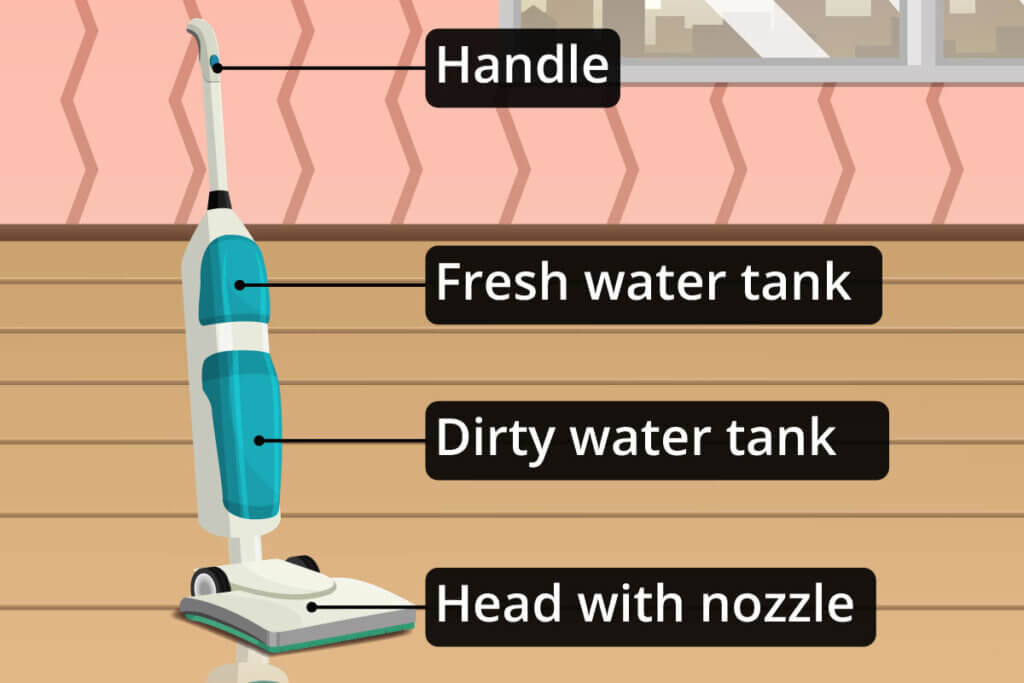
Explained step by step: The use of squeegees
If you take the following steps to heart when using your squeegee, you will guarantee its longevity and benefit from its advantages for a long time.
Preparation
Before you start wiping, fill the water tank with water and, if necessary, some detergent. Insert the cleaning rollers or attach the wiping cloth. Make sure that both the roller and the cloth are always clean before you start. Otherwise, dirt may not be completely absorbed.
Suction mopping
Start the floor cleaner either from the mains or from the battery. Make slow and careful forward and backward movements while letting the squeegee move over the floor. Meanwhile, you can observe that the dirty water tank is slowly but surely being filled with dirt and dust particles. The rollers attached at the bottom rotate continuously and are constantly moistened with fresh water. When you have cleaned the desired area, switch the unit off again.
Follow-up
The most important point in the follow-up: Empty the water tank for the dirty water. This operation is necessary after every, or at least every second, suction pass to prevent dirt from accumulating in the tank and mould from forming. If the DuoClean does not have a self-cleaning function, you will have to clean it manually; nevertheless, occasional cleaning by hand is recommended. Finally, check the cleaned surfaces to make sure that all dirt has been removed.
How large should the area to be cleaned be?
Hard floor cleaners with an average capacity can clean about 60 square metres with one tank filling in one suction cycle. Some manufacturers advertise that their models can clean up to 135 square metres per battery charge. Units with a large capacity can clean a very large area in one pass, but they are heavier and more cumbersome. Low capacity models, on the other hand, are very easy to handle but clean less area in one pass.
Additional steam
Some models work with steam. This is particularly helpful when hard floors are stubbornly dirty, as the warm steam dissolves dirt better. In addition, steam cleaning removes germs and bacteria, making cleaning particularly hygienic. The manufacturer Vileda, for example, advertises that steam can be used to clean both hard floors and carpets. The heat ensures a deep cleaning of the floors.
Tips for care and storage of the hard floor cleaner
When the device is not in use, you should store it well. Some models score points for their particularly compact dimensions, so you can store them safely without scratching them or subjecting them to knocks.
Dry technology with wet mops
Even though suction mops have two water tanks and wipe the floor wet, they have technical parts that should not come into contact with water. The motor that drives the rollers, for example, must not get wet. The cable or battery should also be kept away from moisture.
The right cleaning agent
Normally, only cleaning agents specially designed for this purpose should be put in the tank. Pay attention to the manufacturer’s instructions and do not use any strongly foaming cleaning agents. If you are not sure about the detergent, you can always use the squeegee without one. Pure water is sufficient for most soiling.
Machine washable rollers
Some rollers or cloths can be cleaned in the washing machine. However, a simple manual rinse is usually sufficient. Always follow the manufacturer’s instructions.
Cleaning rollers and wipes
The rollers or cloths that pick up dirt should be cleaned regularly. Most manufacturers recommend replacing them after about six months.

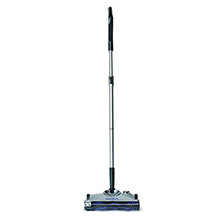
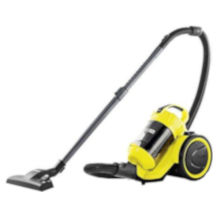
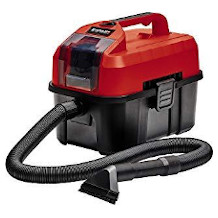
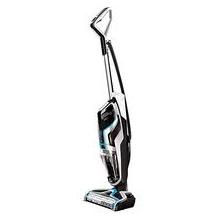
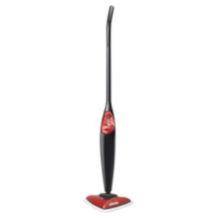
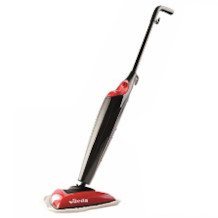

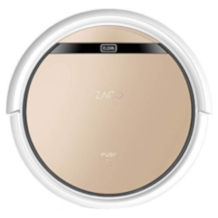

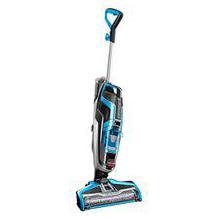
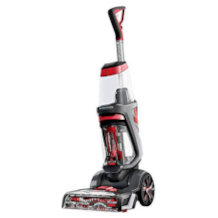
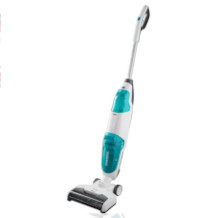
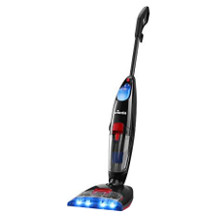
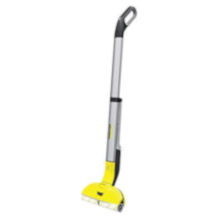

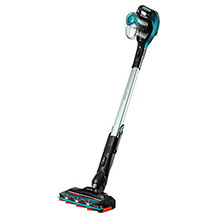
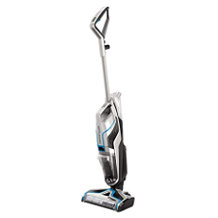




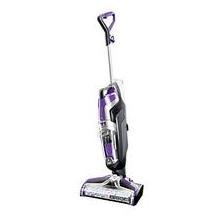
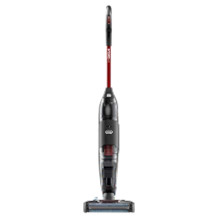

 9,047 reviews
9,047 reviews

